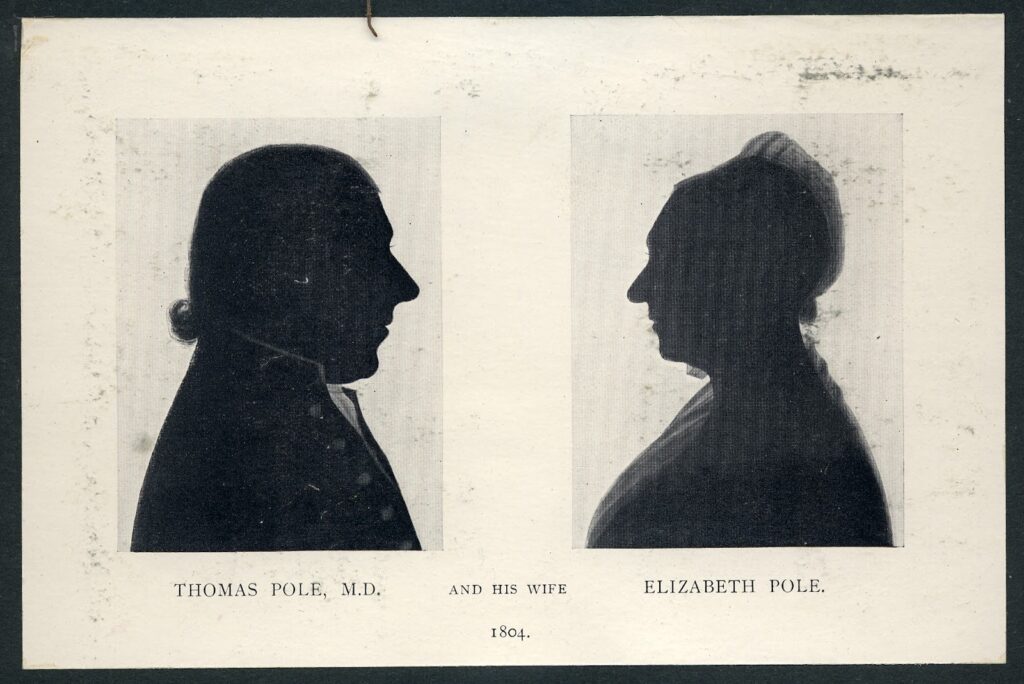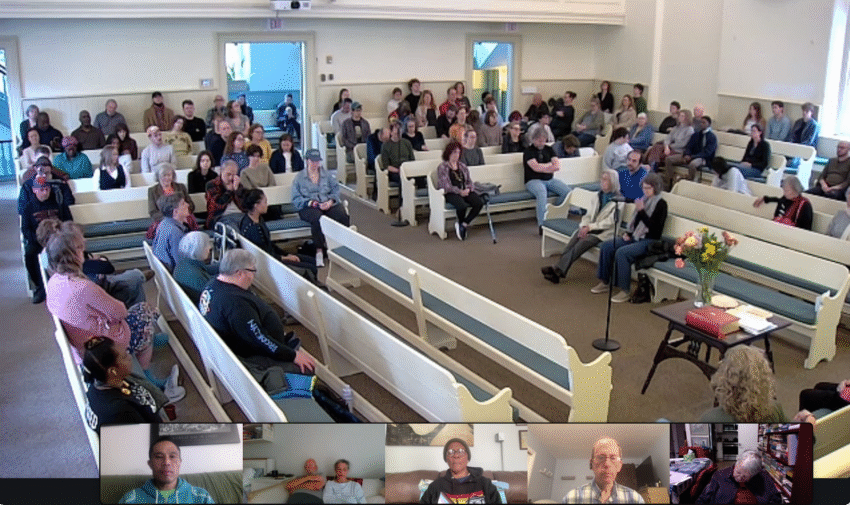If I were to show George Fox a silly TikTok dance, I imagine this would be his response:
All ye poets, jesters, rhymers, makers of verses and ballads, who bend your wits to please novelties, light minds, who delight in jests and toys, more than in the simple naked truth which you should be united to, you are for the undoing of many poor souls, it is your work to tickle up the ears of people with your jests and toys; this proceeds from a wrong heart where dwells the lust, and feeds the wrong heart and mind and wits, which brings them to the grave and dust, and there buries the minds and clogs the nature, which is a shame to all that be in the modesty and pure sincerity and truth and clearness of mind. . . . (George Fox, 1658)
In short, George would not be amused. The founder of Quakerism would likely see social media, and most popular media, as “feeding the wrong heart” and diverting us from the “simple naked truth.”
I’ve been a media literacy educator for more than 17 years. In all that time, I have never thought of how my work relates to my Quaker faith. Until now.
At its face, this feels like an uneasy pairing – media literacy and the Quaker tradition. Media literacy is being able to consume, analyze, evaluate and share media effectively and responsibly. (Think spot misinformation in a Facebook post or deconstruct gender stereotypes in toy advertising.) While quakerism has for most of our history avoided modern technology and communications.
For many early Quakers, silhouettes were the only form of “media making” they indulged in.

1804 silhouette of Thomas Pole and Elizabeth Pole.
The roots of this aversion to media go back to our earliest days. Many Quakers avoided the popular media of the time – the theater and music concerts. We didn’t make media either – no drawing, painting, playing musical instruments – viewing these as “earthly” concerns that took attention away from the spirit. Here’s a cautionary note from Philadelphia Yearly Meeting in 1806:
As our time passeth swiftly away, and our delight ought to be in the law of the Lord; it is advised that a watchful care be exercised over our youth, to prevent their going to stage-plays, horse-races, music, dancing, or any such vain sports and pastimes. . . .
That said, there have always been a few maverick Quaker artists, from Margaret Fell’s poetry to James Turrell’s “sculptures of light.” But Quakers generally were not known for their love of or production of the arts, in any form.
That has changed and softened over the years, as Quakers have learned how to be more engaged with the larger world. But there is still a wariness and uncertainty among us when it comes to media and communications. Our presence online as a faith tradition is negligible, mostly focused on a few websites, email lists, and Facebook groups.
This is in contrast with the larger world, where modern life is increasingly mediated by computers, tablets and smartphones. Ninety-one percent of adults own a smartphone today, up from 44% just ten years ago. Teens are online “almost constantly”, with most of that time spent on three platforms – YouTube, Instagram and TikTok.
So how can a contemporary Quaker relate to this technology-centered reality? I can only speak from my own experience as a more digitally engaged Quaker. But here are some ideas and directions that might be helpful, using the six Quaker testimonies as a frame.
Simplicity
Social media platforms like Instagram, TikTok and YouTube bombard the senses with a chaotic kaleidoscope of imagery, colors, and sounds to overwhelm and dazzle us. How do I participate in the larger culture, but also remain connected to that which is essential and eternal? When do I make time to step away from technology and simply be?
Ideas and suggestions:
- I sometimes struggle with balancing media time with time spent building real world connections, being in nature, and meditating. I limit my use of social media to certain times in the day (30 minutes in the morning, an hour in the evenings), focusing on my interests and communities. I avoid platforms like TikTok and certain online games that feel like time sucks. (There are several smartphone apps and tips for managing online time.)
- Consider sharing messages questioning consumerism, fashion trends, and wealth accumulation. Some creators in this space: Aime Maggie, Cara Nicole, and Aja Barber.
Peace
It’s hard to avoid depictions of violence – real or simulated – when participating online. Do I consume media that centers the values of reconciliation, peaceful resolution of conflict, and restorative justice? Do I use my voice online to promote understanding, kindness, empathy toward others?
Ideas and suggestions:
- There is a lot of media focused on peace making and conflict resolution, if you know where to look. As a scifi / fantasy nerd, I’ve found inspiration from shows like “Star Trek,” books by Becky Chambers, and movies like “Interstellar.” I take comfort from these futuristic visions of humanity actively building peace together.
- There are thousands of peace organizations, movements and activists that you can support and boost online, such as the American Friends Service Committee, the many Black Lives Matter organizations, or the Fellowship of Reconciliation.
Integrity
Social media often encourages us to only depict only the most attractive aspects of ourselves. Am I honest in my representations online and in the real world, warts and all?
Ideas and suggestions:
- Seeking the truth is becoming harder and harder, in a world where it’s so easy to create and spread misinformation. I am careful to not share content that isn’t from a verified source, and I research claims that feel suspect using lateral reading.
- On my social media feeds, I try to be real with my followers and networks. I’ve posted about being laid off from my job, my struggles with social anxiety, and losing my father to cancer. Mychal Threets is a role model for being honest about his mental health struggles while also advocating for public libraries.
Community
Do I use my time and resources to support my community – whether IRL (in real life) or virtual? Can I use my voice to invite people in to community?
Ideas and suggestions:
- While living in San Francisco, I maintain connections to my home meeting in New York via our hybrid Meeting for Worship. While not as nurturing as being there in person, I’ve found comfort in worshiping with my community from wherever I am.
- Nothing beats a hug from a friend. But today it’s easier than ever for me to show support for my loved ones, no matter where they are. I can email, text, voice call or video call. I can even play games or watch movies with friends online.
Equality
Do I support and amplify the voices of those most marginalized in society – LGBTQ, BIPOC, and immigrant folks? Do I seek out different perspectives and ways of viewing the world and the divine?
Ideas and suggestions:
- “Filter bubbles” refers to how social media platforms fracture the media we see into only specific messages, ideas, and sources based on what they think we want to see. I try to expose myself to diverse, cross-cultural perspectives, particularly in my news consumption (e.g. Al Jazeera, Reuters, BBC World). This helps me to better empathize and connect with folks who see the world differently than me.
- Public and independent media stations serve as important counter-weights to corporate media, often telling stories and providing perspectives that would never see the light of day. Consider supporting your local NPR or PBS station.
Stewardship
How do I balance my consumption of media with the impact it has on the environment? How do I promote messages that connect people to the earth and support efforts to preserve it? When do I step away from the online world to be in nature? “Touch grass” is a phrase from online culture, used to encourage someone to step away from their devices and connect with the natural world.
Ideas and suggestions:
- I support and follow a number of environmental organizations and media producers, such as Biographic, the California Academy of Sciences and the National Parks Service.
- There are a number of naturalists and ecologists who spread the wonder of the natural world through their social media feeds. Some of my favorites are Christine Eleanor, Timtast1c, and Emilie Graslie.
These aren’t definitive answers to how to apply the Quaker testimonies to our increasingly digital lives. But hopefully they are signposts toward ways that you might be engaged with the world online in accordance with your own sense of the spirit. The reality is that digital media is changing at a dizzying pace. (Generative AI is the newest technology that promises to upend everything from work to education to democracy itself. But that’s a whole other article on its own!)
I take comfort in our principle of “continuing revelation” which gives us the freedom to test new technologies against the direction of the Inner Light. I wish you well in your own spiritual journey, as you navigate these ever churning digital streams.
A Few Helpful Resources:
- Family Engagement for Digital Literacy & Well-Being Common Sense Education
- How to get past your own “filter bubble” (video), KQED Education
- Lateral reading: The best media literacy tip to vet credible sources, Poytner
- List of virtual and hybrid Quaker meetings for worship,Friends World Committee for Consultation
- Quaker Artists Gary Sandman (2015)
- A Unitarian Universalist perspective on media literacy, First Unitarian Church of Providence

Interesting post!
In fairness, though, I’d point to some past Quakers who did get into the arts to some degree.
Thomas Elwood was a contemporary of George Fox and sometimes transcribed what George wanted to write in his Journal. But in addition to that, Elwood also was a friend of John Milton. Quaker legend has it that after Milton wrote Paradise Lost, Elwood persuaded him to do a more update sequel called Paradise Regained.
Another very early Quaker writer was Stephen Crisp, who wrote a lovely little allegory called “A Short History of a Long Travel from Babylon to Bethel”. It was sort of similar to Bunyan’s Pilgrim’s Progress, but with a decidedly less grim theological orientation,
In the 19th century the greatest Quaker artist was no doubt Edward Hicks, a cousin of Elias Hicks. He painted many versions of “The Peaceable Kingdom”, in addition to paintings of some neighbors’ farms.
There are contemporary Quaker artists as well. Are you familiar with Gary Sandman’s series on Quaker artists?
Yes, I’ve learned a lot from Gary’s work.
I think it’s fair to say that while there have always been artists who were Quakers, the arts were not actively encouraged by most Quaker meetings for a lot of our history.